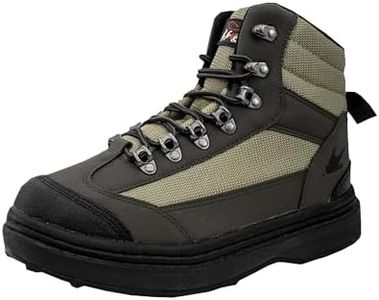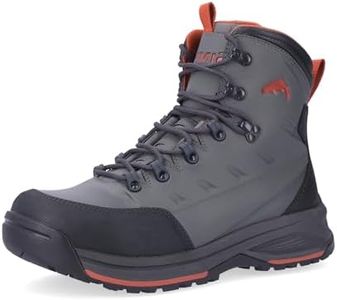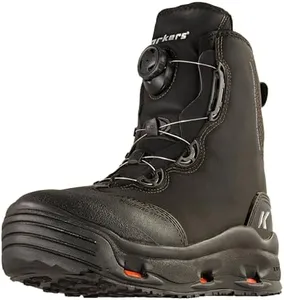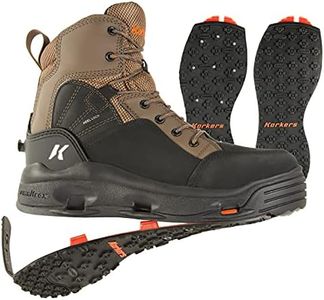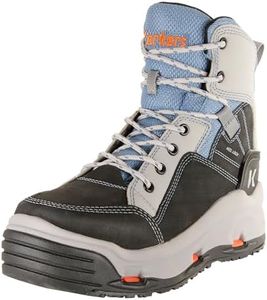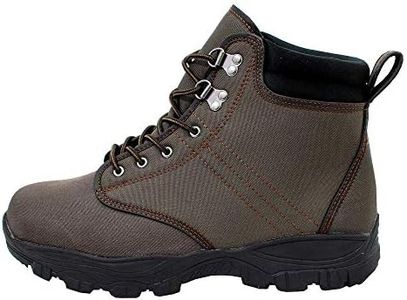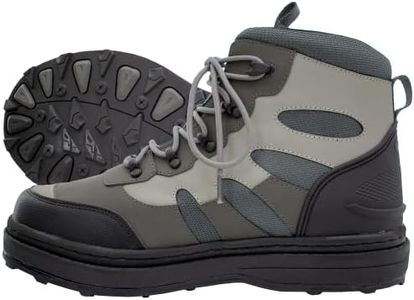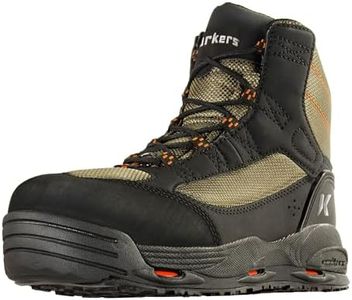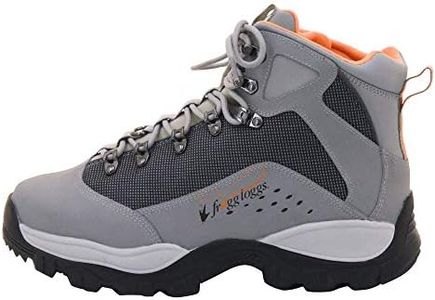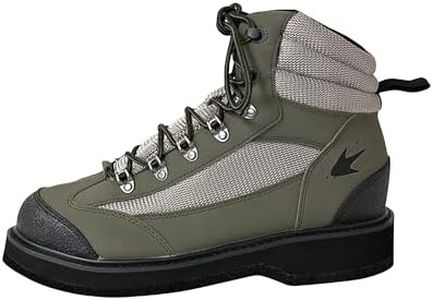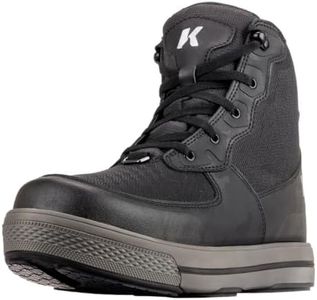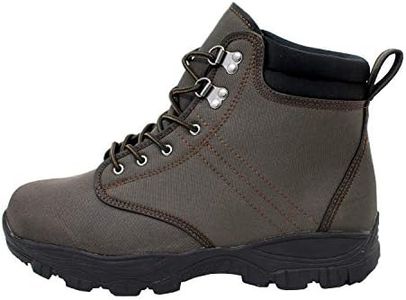We Use CookiesWe use cookies to enhance the security, performance,
functionality and for analytical and promotional activities. By continuing to browse this site you
are agreeing to our privacy policy
10 Best Wading Boots
From leading brands and best sellers available on the web.Buying Guide for the Best Wading Boots
Choosing the right wading boots is essential for anyone planning to fish or wade in streams, rivers, or other bodies of water. The right pair will provide comfort, safety, and durability while ensuring your feet stay protected in wet and sometimes slippery environments. Start by considering the environments where you'll use your boots most often, whether that's rocky streams, muddy banks, or sandy lake bottoms. Keep your intended use, ankle support, and materials in mind to find a good fit for your activities.Sole Material and TypeThe sole material of wading boots plays a crucial role in traction and safety. You typically find felt soles, rubber soles, or studded versions of either. Felt soles grip slippery rocks well, making them ideal for mossy riverbeds, but they can be less suitable for muddy areas and are restricted in some regions due to concerns about transporting invasive species. Rubber soles, especially with added lugs or studs, are versatile and provide good durability and traction in a variety of environments. When choosing, think about the surfaces you’ll wade on most—choose felt if you need the best rock grip and rubber or studded soles for varied or muddy terrain.
Fit and SizingHaving properly fitting boots is important for both comfort and safety in the water. Wading boots often need to accommodate neoprene booties from waders, so many brands size their boots slightly larger. If you mostly wade in warm weather with thin socks, a snugger fit may work, but if you plan to wear thick socks or insulated waders, leave more room. Try them on with your waders if possible, and ensure your toes have some wiggle room without excessive heel lift.
Ankle Support and HeightAnkle support in wading boots helps prevent injuries and provides stability on uneven, slippery surfaces. Higher boots offer more ankle support and are better suited for rocky or challenging terrains, while lower-cut boots are lighter and may suit those walking on easier, flatter areas. Choose higher ankle coverage if you know you’ll be navigating rough streams, and opt for lower boots if weight and freedom of movement are more important for your fishing style.
DrainageGood wading boots should have built-in drainage to allow water to escape quickly. This keeps boots lighter and more comfortable while reducing the risk of blisters caused by pooling water. Boots with mesh panels or designed drainage holes handle water entry and exit more efficiently. If you expect to move in and out of the water frequently, prioritize models that drain rapidly so you’re never weighed down.
Materials and DurabilityThe construction materials of wading boots—such as synthetic mesh, leather, or combinations—affect their longevity, weight, and drying speed. Synthetic materials tend to dry faster and are lighter in weight, making them good for frequent use or travel. Leather may last longer and provide better support but can take longer to dry. Consider how often and intensely you’ll use the boots—regular, heavy use calls for tougher materials, while occasional outings may allow for lighter options.
WeightBoot weight impacts comfort, especially over long walks or hikes to and from the water. Lighter boots are easier to wear for extended periods and for covering longer distances, but may sacrifice some durability or support. Heavier boots tend to be more robust and supportive. Decide what balance works for you depending on how far you’ll walk and how much support you need.
